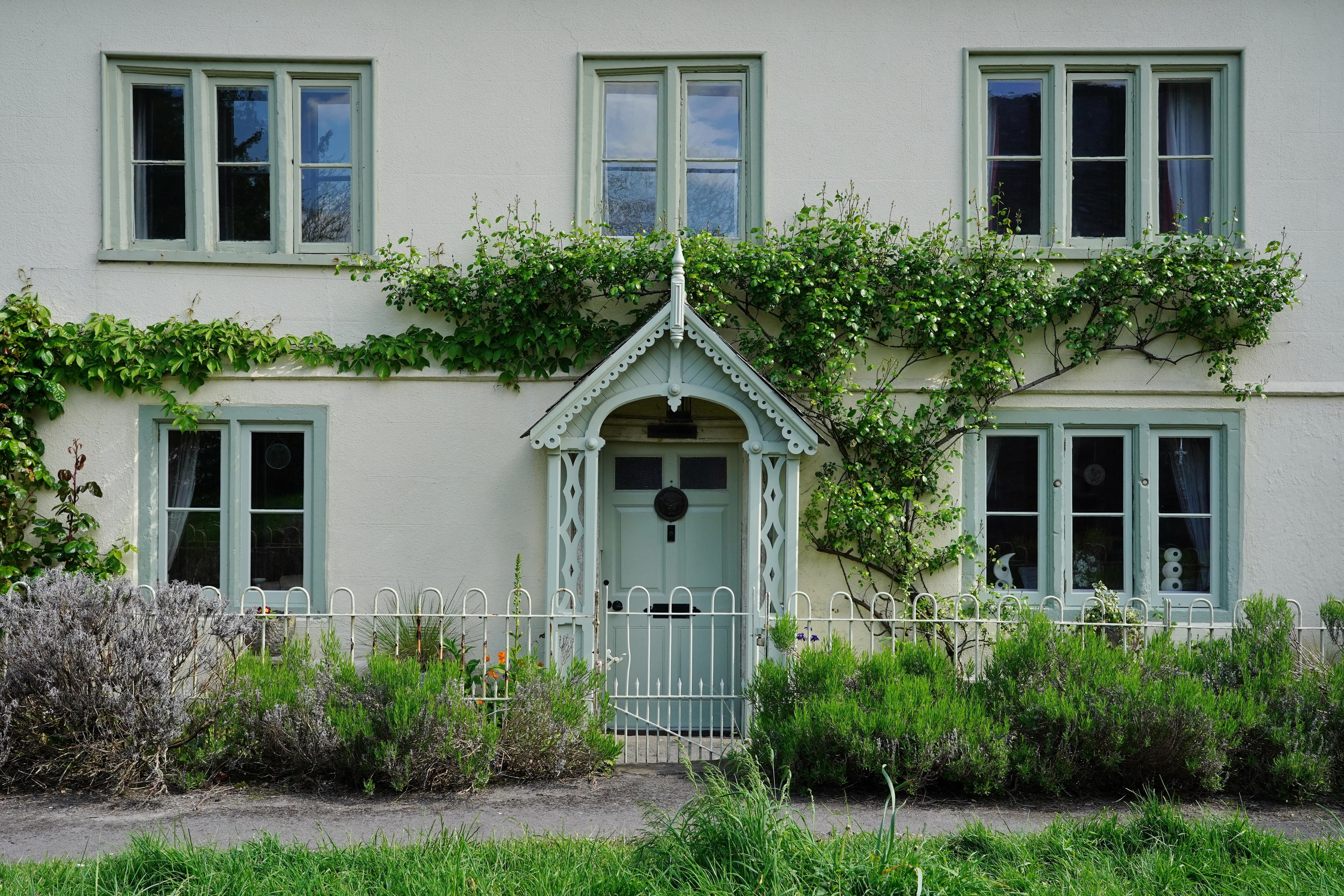Why are some borrower types seen as complex?
The high street banks often look for certain qualities when lending on Buy-to-let properties. This includes things like a long-standing, clean credit history in the UK, close ties to the UK (such as citizenship), prior experience in property investment and being a landlord, and straightforward existing income streams.
Buyers who do not neatly fit the mould of these banks are often underserved because these borrowers are often perceived to be a higher risk and the banks are therefore less likely or unwilling to lend to them.
Aria Finance has been helping landlords with complex borrower profiles access specialist finance for over 20 years to give them the momentum they need to make the most out of their property investment goals.
Who might be considered a complex borrower?
- Foreign nationals without Indefinite Leave to Remain
- Expats looking to purchase investment property while remaining overseas
- First-time buyers looking to start a property investment portfolio but who do not own their main residence.
- First-time landlords who are looking to start their property investment journey but can’t find an appropriate product on the high street
- Accidental landlord who has inherited property that they want to rent or who is moving and want to turn their main residence into a rental property
- Self-employed individuals or persons with complex income streams
- Individuals who have had more recent credit blips on their credit record
Benefits of complex borrower Buy-to-Let finance with Aria Finance
- Access to an exclusive specialist lender panel that understands non-standard borrowers, with access to some exclusive/lower rates than those available on the open market.
- Ability to fine-tune a Buy-to-Let solution based on the unique profile of the complex borrower
- Relationships with expert underwriters, solicitors, valuers, and other property professionals that get deals done faster
- Deep product knowledge that gets your client to the right finance product
From application to completion
Why choose Aria?
Broad lending options
Why choose Aria?
Streamlined finance solutions
Why choose Aria?

Related articles
.png?length=350&name=af%20-%20images%20(10).png) Complex BTL mortgages
Complex BTL mortgages
How to spot landlord opportunities
With rising interest rates and the costs to upgrade properties to meet changing EPC requirements,...
Read story >>A buy-to-let mortgage is a type of mortgage that is used for the remortgage or purchase of a property for rental purposes. High street lenders are less likely to lend against these kinds of properties, which is why specialist finance is usually sought for Buy-to-Let properties.
","broker_specific":0,"hs_child_table_id":0,"hs_created_at":1660837761209,"hs_deleted_at":0,"hs_id":82356730223,"hs_initial_published_at":1761298622695,"hs_is_edited":false,"hs_published_at":1765196947514,"hs_updated_at":1761296182448,"hs_updated_by_user_id":25791956,"products":[{"createdAt":null,"createdByUserId":0,"id":5,"isHubspotDefined":false,"label":"buy-to-let","labelTranslations":{},"name":"buy-to-let","order":4,"type":"option","updatedAt":null,"updatedByUserId":0}],"question":"What is a Buy-to-Let mortgage?","sub_category":{"createdAt":null,"createdByUserId":0,"id":1,"isHubspotDefined":false,"label":"The Basics","labelTranslations":{},"name":"The Basics","order":0,"type":"option","updatedAt":null,"updatedByUserId":0}},{"answer":"Standard properties such as:
\n- \n
- Leasehold apartments \n
- Detached/Semi-detached/Terraced homes \n
Examples of non-standard properties might include:
\n- \n
- Serviced accommodation and student residences, incl. Purpose-built Student Accommodation (PBSOs) \n
- Houses in Multiple Occupation (HMO) \n
- Multi-unit properties with one title deed \n
- Freehold properties split into several flats \n
- Flats above shops, including fast food and takeaways \n
- Ex local authority flats \n
- \n
- The amount that can be borrowed is based on the rental income achievable and the value of the property. \n
- Generally speaking, the assessment of the affordability of the mortgage payment is based on the Interest Coverage Ratio (ICR) which is an indication of the ability of income from a property to cover debt repayments on the mortgage. This can be anywhere from 125% to 145% depending on the tax/legal status of the applicant. \n
- Example: If the ICR is 125%, the property will need to generate at least £1,250 p/m if the mortgage payment is £1,000 p/m. \n
Different lenders will have their own eligibility checks. They will typically check the borrowers’:
\n- \n
- Ability to pay the deposit and source of funds \n
- Income (2 year’s SA302 if self-employed), credit and assets \n
- Last 3 months’ personal and /or business bank statements as appropriate to verify rental income on remortgage cases \n
- Proof of ID (certified copy of passport or driving licence) \n
- Proof of residency (utility bill or bank statement) \n
- Lease copy (AST or commercial lease) \n
Expense should be considered in terms of how much the overall cost will be for your client. This can often be categorised in two ways;
1. Financial Benefit - Your client purchases an unmortgageable property for £100,000 at auction. With use of a bridging loan, they are able to complete renovation works of a new bathroom and kitchen, the property sells for £150,000. Once costs have been taking into account from the £50,000 return on the sale, it eliminates the perceived expensive nature of the bridging finance used. It is no longer expensive finance, but the only finance available to achieve this opportunity.
2. Emotional Benefit - A landlord client’s buy-to-let mortgage lender pulls out at the last minute, and they are already in their notice-to-complete period, having already exchanged. With the flexibility of a bridging loan, a case can complete in days – saving the landlords deposit and avoiding losing the investment property as they can still complete on the new purchase and then have a period of 24-months to arrange traditional finance on the property to replace the bridging loan.
The expense of bridging reflects the risk the lender is taking in the lending decision. They operate minimal underwriting and often secure against unmortgageable, unmarketable properties that finance could not be obtained for through traditional routes. Bridging generally carries no redemption penalties, so with some lenders, after the first month, the client is free to redeem the loan.
This all contributes to the higher interest rate the client will be charged above traditional finance.
Although this will vary between lenders, here are a range of properties that can often be financed with Buy-to-Let mortgages:
\n- \n
- Serviced accommodation and student residences \n
- Houses in Multiple Occupation (HMO) \n
- Freehold properties split into several flats \n
- Flats near to or above commercial premises such as shops, including fast food and takeaways \n
- Ex local authority flats \n
- Holiday lets and other short-term rentals \n
Typical repayment terms for repayment Buy-to-Let mortgages are 5 – 30 years. Interest-only mortgages typically range from 5-10 years
","broker_specific":0,"hs_child_table_id":0,"hs_created_at":1661936233570,"hs_deleted_at":0,"hs_id":83526020021,"hs_initial_published_at":1761298622695,"hs_is_edited":false,"hs_published_at":1765196947514,"hs_updated_at":1761296550467,"hs_updated_by_user_id":25791956,"products":[{"createdAt":null,"createdByUserId":0,"id":5,"isHubspotDefined":false,"label":"buy-to-let","labelTranslations":{},"name":"buy-to-let","order":4,"type":"option","updatedAt":null,"updatedByUserId":0}],"question":"How long can Buy-to-Let mortgages be borrowed for?","sub_category":{"createdAt":null,"createdByUserId":0,"id":1,"isHubspotDefined":false,"label":"The Basics","labelTranslations":{},"name":"The Basics","order":0,"type":"option","updatedAt":null,"updatedByUserId":0}},{"answer":" Some lenders may consider up to 85% loan-to-value (LTV) for a residential complex BTL and 75% LTV for a commercial complex BTL mortgage. However, the most typical max LTV for many lenders is 75%, which means your client should be prepared to have at least a 25% deposit available. The higher the LTV required, the higher the interest rates tend to be. ","broker_specific":0,"hs_child_table_id":0,"hs_created_at":1661937085378,"hs_deleted_at":0,"hs_id":83526020120,"hs_initial_published_at":1761298622695,"hs_is_edited":false,"hs_published_at":1765196947514,"hs_updated_at":1761296574427,"hs_updated_by_user_id":25791956,"products":[{"createdAt":null,"createdByUserId":0,"id":5,"isHubspotDefined":false,"label":"buy-to-let","labelTranslations":{},"name":"buy-to-let","order":4,"type":"option","updatedAt":null,"updatedByUserId":0}],"question":"How much of a deposit is needed for a Buy-to-Let mortgage?","sub_category":{"createdAt":null,"createdByUserId":0,"id":1,"isHubspotDefined":false,"label":"The Basics","labelTranslations":{},"name":"The Basics","order":0,"type":"option","updatedAt":null,"updatedByUserId":0}},{"answer":"This will vary case-by-case, and also between brokers and lenders. At Aria Finance, from the initial enquiry to completion, our average turnaround time for a complex BTL is around 6 to 8 weeks.
","broker_specific":0,"hs_child_table_id":0,"hs_created_at":1661937114011,"hs_deleted_at":0,"hs_id":83526020121,"hs_initial_published_at":1761298622695,"hs_is_edited":false,"hs_published_at":1765196947514,"hs_updated_at":1761296600209,"hs_updated_by_user_id":25791956,"products":[{"createdAt":null,"createdByUserId":0,"id":5,"isHubspotDefined":false,"label":"buy-to-let","labelTranslations":{},"name":"buy-to-let","order":4,"type":"option","updatedAt":null,"updatedByUserId":0}],"question":"How long do applications take to complete for Buy-to-Let mortgages?","sub_category":{"createdAt":null,"createdByUserId":0,"id":1,"isHubspotDefined":false,"label":"The Basics","labelTranslations":{},"name":"The Basics","order":0,"type":"option","updatedAt":null,"updatedByUserId":0}},{"answer":"- \n
- The client gets in touch with their broker seeking options to raise funds for a Buy-to-Let property. \n
- Having conducted a fact-find process, the broker assesses whether a High Street Buy-to-Let mortgage will meet their needs or if they will need to refer the client’s case to a specialist lender, via a Specialist Finance Distributor (SFD) \n
- If the broker decides to refer their client to a SFD, they will let their client know they are being referred and expect a call from them directly. \n
- The SFD underwriter then calls the client and assesses if the client’s circumstances will be suitable for a BTL mortgage. If they are, the underwriter then prepares indicative terms which they send to the client to review. \n
- If the client confirms they are pleased to go ahead with the full process, they are sent all relevant paperwork and a list of underwriting requirements; they can then complete the required paperwork, pay any upfront fees required, gather the required documentation and send it back to the SFD. \n
- The underwriter pre-underwrites the deal, ensuring it’s complete for the lender. They then send the application to the lender to get formal approval in principle \n
- The lender issues the Agreement in Principle (AIP) to the client through the SFD and requests any further supporting documents. \n
- Once the client returns the required documents to the SFD, the underwriter will re-evaluate the case and instruct a valuation. \n
- Once the valuation is received, the SFD packages the case and submits it to the lender. \n
- The lender does a final underwrite of the loan and approves it. They then issue a formal offer, with additional documentation to sign including; the offer itself, legal charge permission and proof of buildings insurance. \n
- The client signs and returns the final documents to the SFD who forwards them over to the lender who instructs the solicitors when received. \n
- Once all legalities have been finalised the funds are released to the borrower. \n
These fees will vary across the market:
\n- \n
- Broker fee – This varies between brokers. Some brokers do not charge a fee and rely on receiving commission from lenders when the loan completes. Other brokers may charge a fixed fee or a percentage of the total loan value. \n
- Application fee – Some lenders and brokers charge a fee for submitting an application. \n
- Valuation fee – To calculate an unbiased, accurate value of the security, lenders will typically instruct an independent valuation. This can also include a projected valuation of the project once completed. In some instances an AVM can be used (especially at lower LTVs). \n
- Arrangement fee – This is calculated as a percentage of the total cost of the loan \n
- Legal fees – If needed, borrowers will have to pay for legal costs such as hiring a solicitor or qualified legal advice \n
- Exit fee – Also known as ERCs (Early Redemption Charges), these are calculated as a percentage of the total cost of the loan and are applicable when an overpayment (usually of more than 10% of the loan total) is made. There are some commercial mortgages that do not have exit fees. \n
- Administration fees - Any additional costs charged by either lender or broker \n

Buy-to-let
Frequently asked questions
What is a Buy-to-Let mortgage?
A buy-to-let mortgage is a type of mortgage that is used for the remortgage or purchase of a property for rental purposes. High street lenders are less likely to lend against these kinds of properties, which is why specialist finance is usually sought for Buy-to-Let properties.
A buy-to-let mortgage is a type of mortgage that is used for the remortgage or purchase of a property for rental purposes. High street lenders are less likely to lend against these kinds of...
Which types of property might need a Buy-to-Let mortgage?
Standard properties such as:
- Leasehold apartments
- Detached/Semi-detached/Terraced homes
Examples of non-standard properties might include:
- Serviced accommodation and student residences, incl. Purpose-built Student Accommodation (PBSOs)
- Houses in Multiple Occupation (HMO)
- Multi-unit properties with one title deed
- Freehold properties split into several flats
- Flats above shops, including fast food and takeaways
- Ex local authority flats
Standard properties such as:
- Leasehold apartments
- Detached/Semi-detached/Terraced homes
Examples of non-standard properties might include:
- Serviced accommodation and student residences, incl....
Who can apply for a Buy-to-Let mortgage?
Buy-to-Let mortgages: how much can be borrowed?
- The amount that can be borrowed is based on the rental income achievable and the value of the property.
- Generally speaking, the assessment of the affordability of the mortgage payment is based on the Interest Coverage Ratio (ICR) which is an indication of the ability of income from a property to cover debt repayments on the mortgage. This can be anywhere from 125% to 145% depending on the tax/legal status of the applicant.
- Example: If the ICR is 125%, the property will need to generate at least £1,250 p/m if the mortgage payment is £1,000 p/m.
- The amount that can be borrowed is based on the rental income achievable and the value of the property.
- Generally speaking, the assessment of the affordability of the mortgage payment is based on...
When will my client find out if their application has been successful?
What eligibility checks will there be for Buy-to-Let mortgages?
Different lenders will have their own eligibility checks. They will typically check the borrowers’:
- Ability to pay the deposit and source of funds
- Income (2 year’s SA302 if self-employed), credit and assets
- Last 3 months’ personal and /or business bank statements as appropriate to verify rental income on remortgage cases
- Proof of ID (certified copy of passport or driving licence)
- Proof of residency (utility bill or bank statement)
- Lease copy (AST or commercial lease)
Different lenders will have their own eligibility checks. They will typically check the borrowers’:
- Ability to pay the deposit and source of funds
- Income (2 year’s SA302 if self-employed), credit...
Why are bridging loans considered to be expensive?
Expense should be considered in terms of how much the overall cost will be for your client. This can often be categorised in two ways;
1. Financial Benefit - Your client purchases an unmortgageable property for £100,000 at auction. With use of a bridging loan, they are able to complete renovation works of a new bathroom and kitchen, the property sells for £150,000. Once costs have been taking into account from the £50,000 return on the sale, it eliminates the perceived expensive nature of the bridging finance used. It is no longer expensive finance, but the only finance available to achieve this opportunity.
2. Emotional Benefit - A landlord client’s buy-to-let mortgage lender pulls out at the last minute, and they are already in their notice-to-complete period, having already exchanged. With the flexibility of a bridging loan, a case can complete in days – saving the landlords deposit and avoiding losing the investment property as they can still complete on the new purchase and then have a period of 24-months to arrange traditional finance on the property to replace the bridging loan.
The expense of bridging reflects the risk the lender is taking in the lending decision. They operate minimal underwriting and often secure against unmortgageable, unmarketable properties that finance could not be obtained for through traditional routes. Bridging generally carries no redemption penalties, so with some lenders, after the first month, the client is free to redeem the loan.
This all contributes to the higher interest rate the client will be charged above traditional finance.
Expense should be considered in terms of how much the overall cost will be for your client. This can often be categorised in two ways;1. Financial Benefit -Your client purchases an unmortgageable...
What sort of properties can be purchase or re-finance with Buy-to-Let mortgages?
Although this will vary between lenders, here are a range of properties that can often be financed with Buy-to-Let mortgages:
- Serviced accommodation and student residences
- Houses in Multiple Occupation (HMO)
- Freehold properties split into several flats
- Flats near to or above commercial premises such as shops, including fast food and takeaways
- Ex local authority flats
- Holiday lets and other short-term rentals
Although this will vary between lenders, here are a range of properties that can often be financed with Buy-to-Let mortgages:
- Serviced accommodation and student residences
- Houses in Multiple...
How long can Buy-to-Let mortgages be borrowed for?
Typical repayment terms for repayment Buy-to-Let mortgages are 5 – 30 years. Interest-only mortgages typically range from 5-10 years
Typical repayment terms for repayment Buy-to-Let mortgages are 5 – 30 years. Interest-only mortgages typically range from 5-10 years
How much of a deposit is needed for a Buy-to-Let mortgage?
How long do applications take to complete for Buy-to-Let mortgages?
This will vary case-by-case, and also between brokers and lenders. At Aria Finance, from the initial enquiry to completion, our average turnaround time for a complex BTL is around 6 to 8 weeks.
This will vary case-by-case, and also between brokers and lenders. At Aria Finance, from the initial enquiry to completion, our average turnaround time for a complex BTL is around 6 to 8 weeks.
How does the application process work for Buy-to-Let mortgages?
- The client gets in touch with their broker seeking options to raise funds for a Buy-to-Let property.
- Having conducted a fact-find process, the broker assesses whether a High Street Buy-to-Let mortgage will meet their needs or if they will need to refer the client’s case to a specialist lender, via a Specialist Finance Distributor (SFD)
- If the broker decides to refer their client to a SFD, they will let their client know they are being referred and expect a call from them directly.
- The SFD underwriter then calls the client and assesses if the client’s circumstances will be suitable for a BTL mortgage. If they are, the underwriter then prepares indicative terms which they send to the client to review.
- If the client confirms they are pleased to go ahead with the full process, they are sent all relevant paperwork and a list of underwriting requirements; they can then complete the required paperwork, pay any upfront fees required, gather the required documentation and send it back to the SFD.
- The underwriter pre-underwrites the deal, ensuring it’s complete for the lender. They then send the application to the lender to get formal approval in principle
- The lender issues the Agreement in Principle (AIP) to the client through the SFD and requests any further supporting documents.
- Once the client returns the required documents to the SFD, the underwriter will re-evaluate the case and instruct a valuation.
- Once the valuation is received, the SFD packages the case and submits it to the lender.
- The lender does a final underwrite of the loan and approves it. They then issue a formal offer, with additional documentation to sign including; the offer itself, legal charge permission and proof of buildings insurance.
- The client signs and returns the final documents to the SFD who forwards them over to the lender who instructs the solicitors when received.
- Once all legalities have been finalised the funds are released to the borrower.
- The client gets in touch with their broker seeking options to raise funds for a Buy-to-Let property.
- Having conducted a fact-find process, the broker assesses whether a High Street Buy-to-Let...
What fees and charges can I expect with Buy-to-Let mortgages?
These fees will vary across the market:
- Broker fee – This varies between brokers. Some brokers do not charge a fee and rely on receiving commission from lenders when the loan completes. Other brokers may charge a fixed fee or a percentage of the total loan value.
- Application fee – Some lenders and brokers charge a fee for submitting an application.
- Valuation fee – To calculate an unbiased, accurate value of the security, lenders will typically instruct an independent valuation. This can also include a projected valuation of the project once completed. In some instances an AVM can be used (especially at lower LTVs).
- Arrangement fee – This is calculated as a percentage of the total cost of the loan
- Legal fees – If needed, borrowers will have to pay for legal costs such as hiring a solicitor or qualified legal advice
- Exit fee – Also known as ERCs (Early Redemption Charges), these are calculated as a percentage of the total cost of the loan and are applicable when an overpayment (usually of more than 10% of the loan total) is made. There are some commercial mortgages that do not have exit fees.
- Administration fees - Any additional costs charged by either lender or broker
These fees will vary across the market:
- Broker fee – This varies between brokers. Some brokers do not charge a fee and rely on receiving commission from lenders when the loan completes. Other...
Sorry, no results were found for query ""

